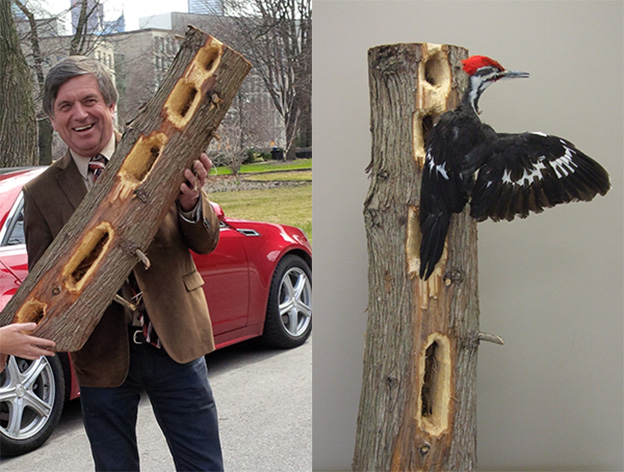Why don’t woodpeckers get headaches?

MPP Garfield Dunlop, left, with the wood he donated to the Integrated Science Program. A pileated woodpecker specimen has been mounted to the wood, right, now found in a classroom.
Pileated woodpeckers can cause a lot of damage to trees.
The large birds, common in forests across Canada, can hammer deep holes while in search of insects or excavating a nest.
But while the pileated woodpecker spends much of its day hitting its head against trees, it doesn’t ever injure its brain.
That fact has led the woodpecker to become a valuable teaching tool in McMaster’s Integrated Science Program, where instructors teach students about its unique physiology.
Better understanding how the bird protects its brain could even lead to the development of better helmets for high-impact sports like hockey and football.
MPP Garfield Dunlop recently toured iSci facilities and learned about the use of the woodpecker – which he frequently sees in his own backyard – in the program’s curriculum.
He later donated a large piece of wood, filled with holes made by a pileated woodpecker, to the program.

